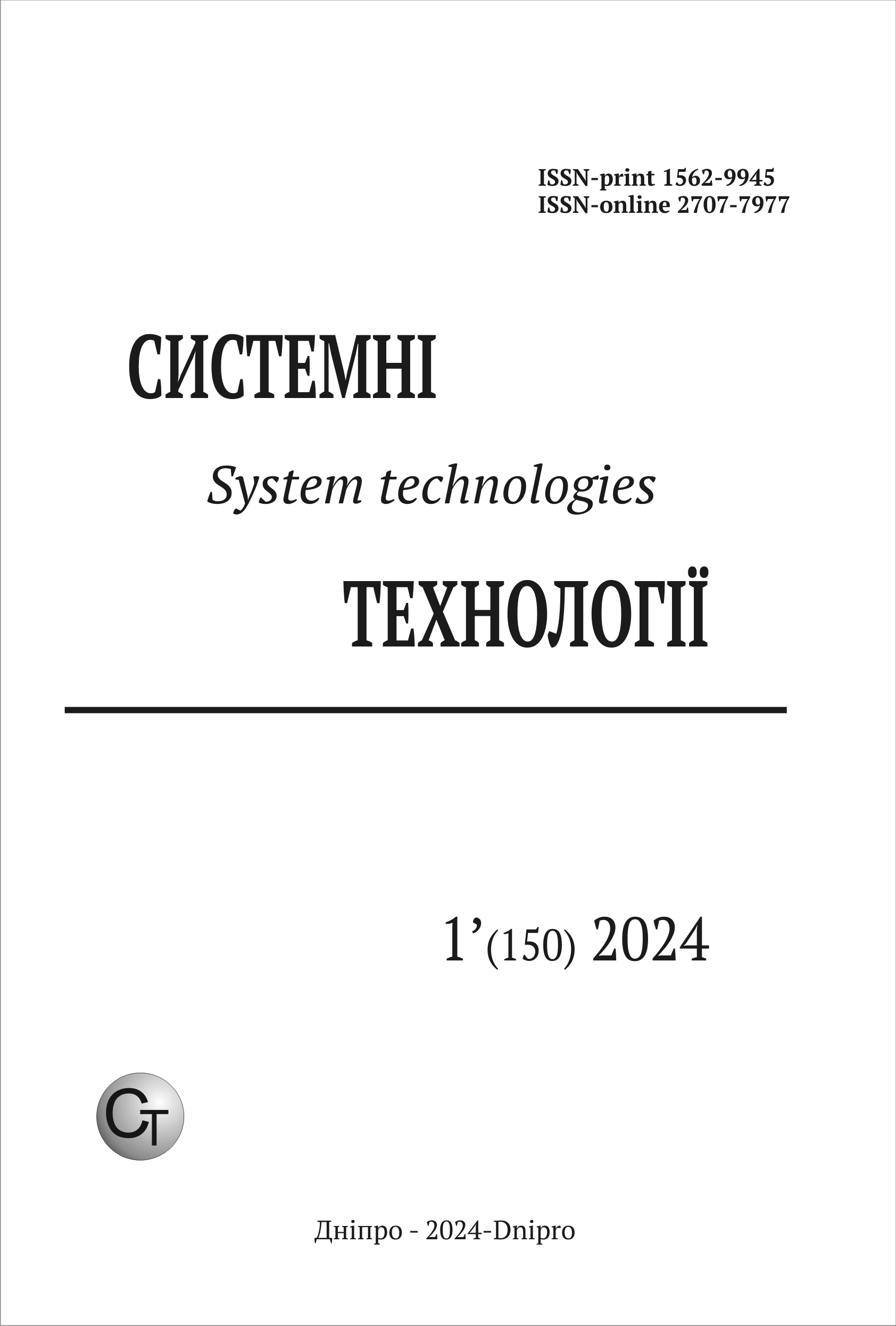ВИКОРИСТАННЯ ПРИНЦИПІВ СИСТЕМНОГО АНАЛІЗУ ПРИ РОЗРОБЦІ ІНТЕГРОВАНОГО СЕРЕДОВИЩА ПРОГНОЗУВАННЯ ЗАБРУДНЕНОСТІ ПОВІТРЯ
DOI:
https://doi.org/10.34185/1562-9945-1-150-2024-02Ключові слова:
прогнозування забрудненості повітря, діоксид азоту, концентрація забруднювача, машинне навчання, системний аналіз, автомобільний трафік, довга короткочасна пам’ять, середня абсолютна похибка.Анотація
У даній роботі прогнозування забрудненості повітря досліджується в контексті менш дослідженого забруднювача повітря, яким є діоксид азоту, з врахуванням впливу на його концентрацію автомобільного трафіку на основі прогнозованих значень, що не розглядається в інших існуючих дослідженнях. Мета роботи полягала в дослідженні впливу використання системного підходу на точність прогнозування забрудненості повітря діоксидом азоту. Проведене експериментальне дослідження вказує на те, що використання підходу, що базується на принципах системного аналізу, дозволяє підвищити точність прогнозування забрудненості повітря діоксидом азоту за рахунок використання в якості вхідних ознак моделі прогнозованих значень автомобільного трафіку замість значень за минулі періоди.
Посилання
World Health Organization, WHO global air quality guidelines. Particulate matter (PM2.5 and PM10), ozone, nitrogen dioxide, sulfur dioxide and carbon monoxide. Geneva: World Health Organization, 2021.
P. Muthukumar, K. Nagrecha, D. Comer et al., “PM2.5 Air Pollution Prediction through Deep Learning Using Multisource Meteorological, Wildfire, and Heat Data”, Atmosphere, vol. 13, no. 5, article 822, 2022. DOI: 10.3390/atmos13050822.
B. Liu, M. Wang M., and H. W. Guesgen, “A hybrid model for spatial–temporal prediction of PM2.5 based on a time division method”, International Journal of Environmental Science and Technology, vol. 20, no. 11, pp. 12195 – 12206, 2023. DOI: 10.1007/s13762-023-04813-z.
A. AlShehhi, and R. Welsch, “Artificial intelligence for improving Nitrogen Dioxide forecasting of Abu Dhabi environment agency ground-based stations”, Journal of Big Data, vol. 10, art. 92, 2023. DOI: 10.1186/s40537-023-00754-z.
M. I. Rodriguez-Garcia, M. C. Ribeiro Rodrigues, J. Gonzalez-Enrique, J. J. Ruiz-Aguilar, and I. J. Turias, “Forecasting air pollutants using classification models: a case study in the Bay of Al-geciras (Spain)”, Stochastic Environmental Research and Risk Assessment, vol. 37, pp. 4359-4383, 2023. DOI: 10.1007/s00477-023-02512-2.
D. Iskandaryan, F. Ramos, and S. Trilles, “Bidirectional convolutional LSTM for the prediction of nitrogen dioxide in the city of Madrid”, PLoS One, vol. 17, no. 6, article e0269295, 2022. DOI: 10.1371/journal.pone.0269295.
European Environment Agency, Explaining road transport emissions: A non-technical guide. Luxembourg: Publications Office of the European Union, 2016. doi: 10.2800/71804.
V. M. Lovkin, S. A. Subbotin, and A. O. Oliinyk, “Method for Agent-Oriented Traffic Prediction under Data and Resource Constraints”, Radio Electronics, Computer Science, Control, vol. 4, pp. 99-110, 2023. DOI: 10.15588/1607-3274-2023-4-10.
Aforos de trafico en la ciudad de Madrid permanentes – Portal de datos abiertos del Ayuntamiento de Madrid, 2023. [Online]. Available: https://datos.madrid.es/sites/v/index.jsp?vgnextoid=fabbf3e1de124610VgnVCM2000001f4a900aRCRD&vgnextchannel=374512b9ace9f310VgnVCM100000171f5a0aRCRD.
Calidad del aire. Datos horarios desde 2001 – Portal de datos abiertos del Ayuntamiento de Madrid, 2023. [Online]. Available: https://datos.madrid.es/portal/site/egob/menuitem.c05c1f754a33a9fbe4b2e4b284f1a5a0/?vgnextoid=f3c0f7d512273410VgnVCM2000000c205a0aRCRD&vgnextchannel=374512b9ace9f310VgnVCM100000171f5a0aRCRD.
En portada – Portal de datos abiertos del Ayuntamiento de Madrid, 2023. [Online]. Available: https://datos.madrid.es/portal/site/egob.
Завантаження
Опубліковано
Номер
Розділ
Ліцензія
Авторське право (c) 2024 Системні технології

Ця робота ліцензується відповідно до ліцензії Creative Commons Attribution 4.0 International License.















